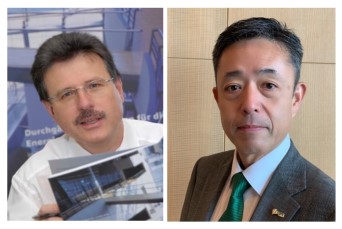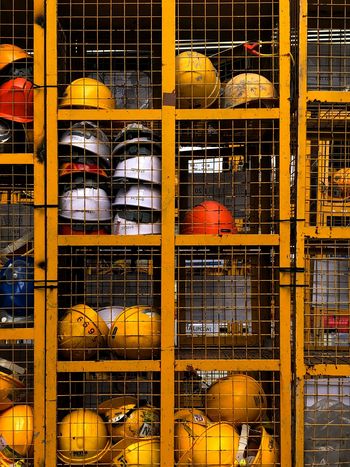SF6 end-of-life treatment of T&D equipment (>1kV) in Substations
SF6 has proven its excellent dielectric properties for the safe and secure operation of electrical equipment. Its only drawback is the very high global warming potential which casts a serious cloud over this substance when released into the atmosphere.
In the electric power industry, large numbers of SF6-containing transmission and distribution equipment are operating in Substations and other similar installations such as Power Plants and Gas Insulated Lines. SF6 emissions from this equipment could occur during production, commissioning, operation and servicing and in the case of end-of-life handling. While SF6 emissions from state-of-the-art electrical equipment during normal operation are negligible, a recent study by the well-accepted Fraunhofer Institute of Energy Economics and Energy System Technology (IEE) claims that end-of-life treatment is by far the dominant source of SF6 emissions.

by Günter Kachelrieß, Convenor JWG B3/A3.59 and Koji Kawakita, Chairperson of Study Committee B3
Present challenges
The installation of SF6-containing electrical transmission and distribution equipment started in the 1970s for high-voltage equipment and extended down to medium-voltage in the 1980s. There is an increasing number of installations coming to their end-of-life in the coming years.
Although the use and handling of SF6 is regulated for this equipment, regulations (e.g. the European F-Gas regulation) have not given clear requirements on end-of-life treatment of SF6 and do not rigorously sanction improper SF6 end-of-life handling or stimulate re-use or recycling of SF6.
Policymakers in some regions in the world are engaged in reducing CO2 equivalent emissions and also SF6 due to its high global warming potential. However, the majority of the SF6 efforts focus on new installations of electrical transmission and distribution equipment where SF6 might be replaced by more environmentally friendly candidates. This approach may limit the amount of banked SF6 in the future but still does not address the predominant emission potential from the installed base.
In addition, there is a high number of SF6-based technical solutions from many manufacturers in very different market segments, operated by TSO, DSO and industry. Unfortunately, no clear instructions available at present on how this equipment can be treated at end-of-life in a responsible way with minimal impact on the environment. Without guidance, mishandling actions from non-experts in this area might lead to higher SF6 emissions.
The Joint Working Group’s task
The scope of the Joint Working Group B3/A3.59 entitled "Guidelines for SF6 end-of-life treatment of T&D equipment (>1kV) in Substations" is to give practical guidelines for appropriate SF6 end-of-life treatment contained in transmission and distribution equipment as a blueprint for environmentally responsible end-of-life handling of SF6 in the electric power industry, which bears the risk to become the main source of SF6 emission during equipment’s life cycle.
A Technical Brochure shall:
- Give an overview of existing SF6 end-of-life techniques and practices;
- Collect and analyse existing SF6 end-of-life recommendations, specifications, standards and regulations;
- Conduct a gap analysis where SF6 end-of-life practices or recommendations, specifications, standards or regulations are missing;
- Establish guidelines for appropriate and practical SF6 end-of-life treatment (i.e. removal, storage, transport, final disposal and possible re-use/recycling) while minimizing the end-of-life emissions and ensure safe end-of-life handling;
- Provide advice for future regulation(s) addressing the safeguard of appropriate SF6 end-of-life treatment and ensuring minimal SF6 end-of-life emissions.
The Joint Working Group consists of members with a wide variety of experience from all over the world, dealing with SF6-containing transmission and distribution equipment in all phases of its lifetime: From the equipment design, manufacturing and testing, commissioning at the installation site, operation, servicing, and decommissioning until the final (used) SF6 gas treatment.
The Joint Working Group will discuss and record practical guidelines for SF6 end-of-life treatment in relevant stages:
- Preparation of the equipment for decommissioning, by establishing a checklist for preparatory work that has to be done before the physical decommissioning;
- Equipment decommissioning procedures, including the recovery of SF6, based on best available practices;
- Formulate handling procedures for decommissioned equipment following SF6 recovery to not simply treat the equipment as waste, but as reusable material depending on its contamination level. Procedures will vary for equipment containing non-arced gases, sightly arced gases or heavily arced gases as well as for failed equipment;
- On-site storage of retrieved (used) SF6, supplying information on how the gas may be temporarily stored on-site before being transferred to its final treatment;
- Transport of retrieved (used) SF6 in accordance with relevant legislative requirements and appropriative labelling;
- SF6 quality evaluation procedures that shall determine if the retrieved (used) SF6 is ready for re-use after reconditioning or must be treated as waste;
- Reconditioning of SF6 for re-use, detailing its preconditions and available processes;
- Final disposal procedures for non-reusable SF6 which cannot be put back into any lifecycle and must be incinerated;
- Recommendations to existing or new regulation(s) to safeguard appropriate SF6 end-of-life treatment which will be based on a gap and best practice analysis. This will enable the regulators to review the local regulations and adapt accordingly.
Thumbnail credit: Michał Mancewicz on Unsplash



